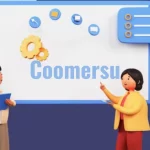Car accidents are an unfortunate reality of our roads, and determining fault can often be as tricky as navigating rush hour traffic. You feel you know what happened. You were following the rules of the road while the other driver had terrible judgement and crashed into your vehicle. You’re adamant you’re not to blame, yet they’re disputing your version of events. They’re going as far as to deny your claims, stating that your actions led to the crash. Where do you go from here?
It helps to consider the type of car accident you’re involved in. Some scenarios have a pattern where fault falls on a particular driver. Then, you must carry out an assessment. This guide will help you understand more.
Rear-End Collisions
Rear-end collisions, often attributed to tailgating, are a familiar scenario. The general assumption usually places fault on the driver behind, but there are exceptions. Factors like sudden stops, brake light malfunctions, or even reckless driving from the front can cloud the waters. Remember, maintaining a safe following distance and having a functional brake system can go a long way in preventing such incidents.
Junction Incidents
Junctions, where conflicting paths cross, can be a fault-finding challenge. Understanding the nuances of right of way is crucial. Traffic signals and signs dictate rules, but in the absence of clear guidelines, disputes arise. Brush up on traffic laws, be cautious even with the right of way, and consider investing in a dashcam to provide clarity in case of a dispute. Read this guide if the driver isn’t admitting to fault in this scenario.
Parking Lot Predicaments
Parking lots, often a haven for dings and dents, pose their own set of challenges. The absence of clear traffic regulations can make fault assessment tricky. When accidents occur, gather evidence such as pictures, witness statements, and surveillance footage if available.
Changing Lanes
Lane changes and merging can be a grey area when determining fault. The absence of clear-cut rules in some scenarios can make it challenging to assign responsibility. Ensure you use your turn signals, check your blind spots, and maintain a reasonable speed when changing lanes. Dashcams can again be your silent ally in case of a dispute.
Tips for Keeping Calm and Collected After a Car Crash
In common car accident scenarios, determining fault can be complex, so consulting a car accident attorney in Maryland can help ensure you understand your rights and options. You’ve exited the vehicle to see the damage and to check if the other driver is injured. But, you’re confronted by someone that’s angry and accusing you of causing the crash. It’s easy to raise your voice and match their energy as they’re being threatened and trying to make you say you caused the accident.
However, you have to remember that this can be more damaging. You can end up getting into a heated argument with the other driver, which can lead to you saying things you don’t mean. Indeed, this could be enough to damage your claim later on. Here are some tips on staying calm and avoiding making the situation worse.
Take a Moment
Before you say anything, just take a moment to enjoy a deep breath and calm yourself down. It’s easy to say something in the heat of the moment, especially when the other driver catches you off guard. Remember what’s happened and that raising your voice won’t help the situation. It’s all about thinking before you say anything and considering your behaviour. You don’t have to respond to the other driver and how they’re acting towards you.
Avoid Discussions
It can be tempting to discuss the car accident with the other driver. You want to clarify what happened and that it wasn’t your fault. But, this is a conversation that can lead to an argument. It could even be recorded and used against you if you admit liability. Therefore, it’s best to avoid any discussion of what just happened. Focus on exchanging information and sticking to what’s necessary.
Remove Yourself
If you feel yourself getting angry or becoming overwhelmed, walk away from the situation. You need to stay collected and not show any emotion. This will ensure that the other driver doesn’t take advantage of you. Therefore, recognise when you’re starting to get nervous or heated. Then, walk away from the other driver and focus on your vehicle. You can wait for the police to arrive.
Conclusion
In the realm of driving, accidents are often unexpected and unwelcome. Navigating fault assessment requires a blend of caution, adherence to traffic rules, and the strategic use of technology. Whether it’s a rear-end collision, an intersection incident, or a weather-related accident, staying informed and proactive is key. Remember, being prepared today might just save you from the complexities of fault determination tomorrow.







